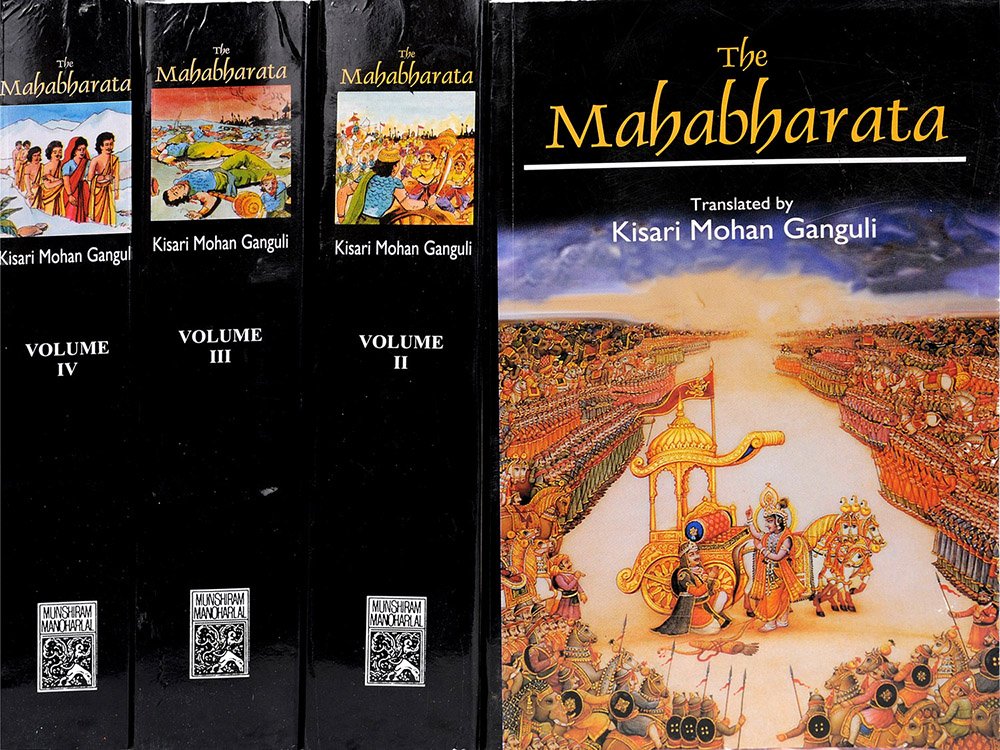Mahabharata (English)
by Kisari Mohan Ganguli | 2,566,952 words | ISBN-10: 8121505933
The English translation of the Mahabharata is a large text describing ancient India. It is authored by Krishna-Dwaipayana Vyasa and contains the records of ancient humans. Also, it documents the fate of the Kauravas and the Pandavas family. Another part of the large contents, deal with many philosophical dialogues such as the goals of life. Book...
Section LIX
"Vrihadasva said,
'Having made this compact with Dvapara, Kali came to the place where the king of the Nishadhas was. And always watching for a hole, he continued to dwell in the country of the Nishadhas for a long time. And it was in the twelfth year that Kali saw a hole. For one day after answering the call of nature, Naishadha touching water said his twilight prayers, without having previously washed his feet. And it was through this (omission) that Kali entered his person.
And having possessed Nala, he appeared before Pushkara, and addressed him, saying,
'Come and play at dice with Nala. Through my assistance you will surely win at the play. And defeating king Nala and acquiring his kingdom, do you rule the Nishadhas.'
Thus exhorted by Kali, Pushkara went to Nala. And Dvapara also approached Pushkara, becoming the principal die called Vrisha.
And appearing before the warlike Nala, that slayer of hostile heroes, Pushkara, repeatedly said,
'Let us play together with dice.'
Thus challenged in the presence of Damayanti, the lofty-minded king could not long decline it. And he accordingly fixed the time for the play. And possessed by Kali, Nala began to lose, in the game, his stakes in gold, and silver, and cars with the teams thereof, and robes. And maddened at dice, no one amongst his friends could succeed in dissuading that represser of foes from the play that went on. And thereupon, O Bharata, the citizens in a body, with the chief councillors, came thither to behold the distressed monarch and make him desist.
And the charioteer coming to Damayanti spake to her of this, saying,
'O lady, the citizens and officers of the state wait at the gate. Do you inform the king of the Nishadhas that the citizens have come here, unable to bear the calamity that has befallen their king conversant with virtue and wealth.'
Thereupon Bhima’s daughter, overwhelmed with grief and almost deprived of reason by it, spake unto Nala in choked accents,
'O king, the citizens with the councillors of state, urged by loyalty, stay at the gate desirous of beholding you. It behoves you to grant them an interview.'
But the king, possessed by Kali, uttered not a word in reply unto his queen of graceful glances, uttering thus her lamentations. And at this, those councillors of state as also the citizens, afflicted with grief and shame, returned to their homes, saying, 'He lives not.' And, O Yudhishthira, it was thus that Nala and Pushkara gambled together for many months, the virtuous Nala being always worsted.'"
Conclusion:
This concludes Section LIX of Book 3 (Vana Parva) of the Mahabharata, of which an English translation is presented on this page. This book is famous as one of the Itihasa, similair in content to the eighteen Puranas. Book 3 is one of the eighteen books comprising roughly 100,000 Sanskrit metrical verses.
FAQ (frequently asked questions):
Which keywords occur in Section LIX of Book 3 of the Mahabharata?
The most relevant definitions are: Nala, Kali, Pushkara, Nishadhas, Dvapara, Damayanti; since these occur the most in Book 3, Section LIX. There are a total of 11 unique keywords found in this section mentioned 33 times.
What is the name of the Parva containing Section LIX of Book 3?
Section LIX is part of the Nalopakhyana Parva which itself is a sub-section of Book 3 (Vana Parva). The Nalopakhyana Parva contains a total of 28 sections while Book 3 contains a total of 13 such Parvas.
Can I buy a print edition of Section LIX as contained in Book 3?
Yes! The print edition of the Mahabharata contains the English translation of Section LIX of Book 3 and can be bought on the main page. The author is Kisari Mohan Ganguli and the latest edition (including Section LIX) is from 2012.
